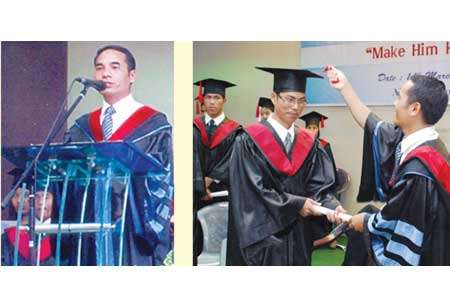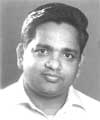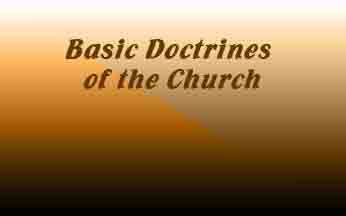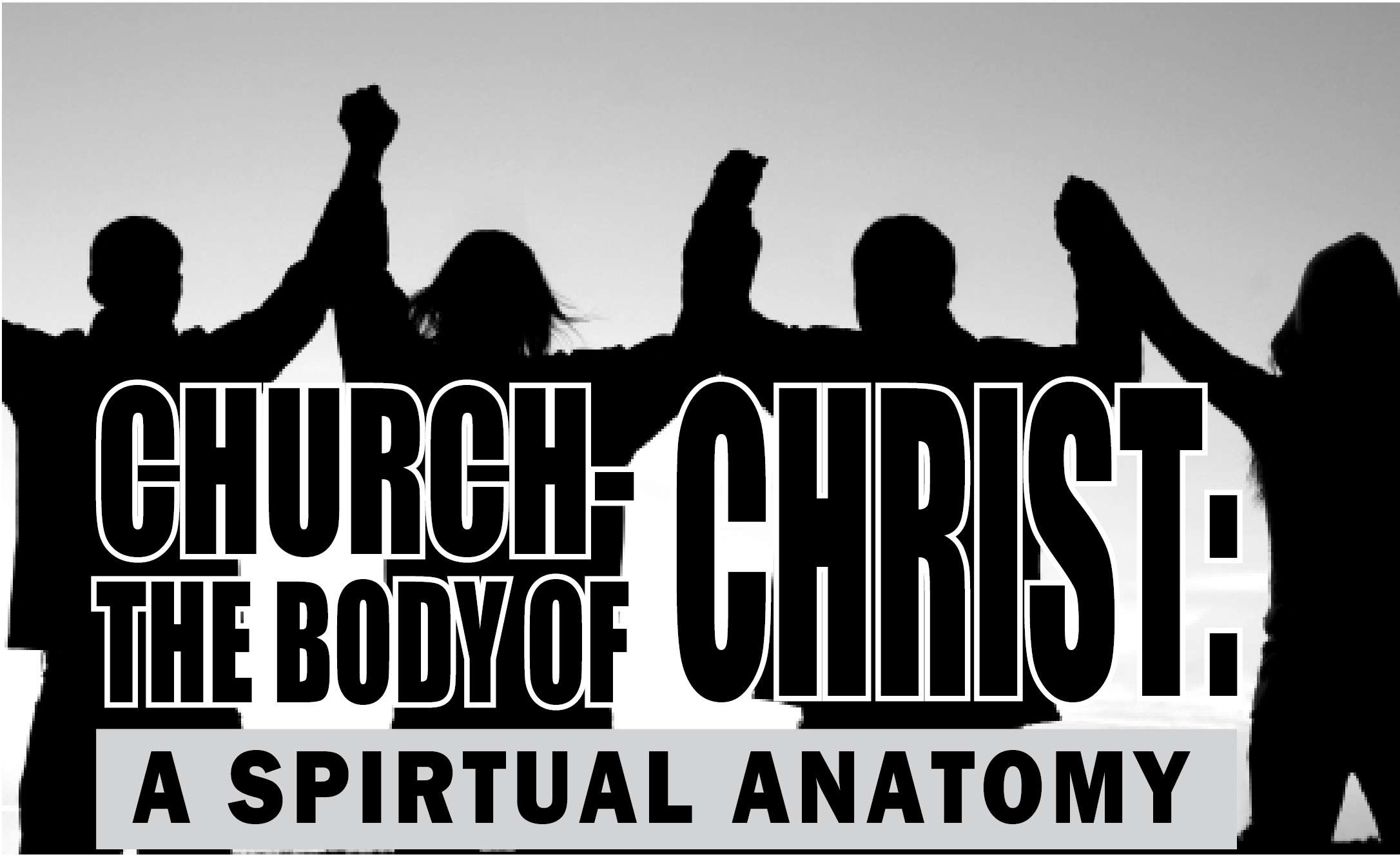

Pentecostalism and Theological Education
Dr. T. P. Varughese
Theological education is fundamental to the mission of the church, in bringing the ‘Kingdom of God’ into the hearts of the people. Jesus did not establish a theological institution in Palestine, but He manifested the character and power of the kingdom of God among the people. This was not a reality with the Jewish religion.
In the days of Jesus there were no seminaries, Bible Colleges or Christian Universities, as we see today. But He taught about God (theology) in Galilee, Samaria and Judea in His time. Hundreds have been brought to the Kingdom of God and became disciples during His “three years of ministry”. Jesus’ teaching was two-fold; corrected existing fallacies and taught truths of eternal value. Many lives were transformed by His teachings. Just as it is a proven fact that without good teachers changes will not occur. Similarly, theologically trained teachers can produce effective Christian leaders and disciples.
Pentecostalism and Theological Education What is Pentecostalism?
Pentecostalism is not a concept, creed or denomination as many think, but it is the experience of the divine trinity. The manifestation of it occurred in the upper room in the first century. The word ‘Pentecost’ means fiftieth day which is more Jewish in its root meaning, 50th day after Passover. The day the Apostles of Jesus along with other disciples and believers, about 120, gathered in the upper room to receive the promise of the Father as we read in Luke 24:49 which has been fulfilled in Acts 2:1-4.
Today when we talk about Pentecostalism, it refers to a group of people who believe in the Word of God and the Holy Spirit . Their worship is marked by the use of the gift of tongues. There are many Pentecostal groups and different denominations and now all of them are counted as a branch of Christianity. In their worship we witness the unusual freedom, as against the rigid and strict rules of traditional dogmas. Pentecostal beliefs and practices are mostly biblical and Christian. One negative feature is that it is a highly fragmented family within Christianity, with different modes of worship patterns that is increasing with the mushrooming of the ‘new generation’ churches.
Roots: There are different views about the roots of Pentecostalism. Some ascribe it to the Holiness Movement and Methodism (Full Gospel Church of God), and some others to the Reformed Churches (Assemblies of God). Whatever may be the case, Pentecostalism in its beginning emphasized on holiness and sanctification.
A Short History: Pentecostalism started in First Century A.D. on the day of Pentecost in Jerusalem (Act, ch.2), when the people gathered in the upper room, and the Holy Ghost came upon them, and they began to speak in tongues. They spoke in languages other than their native tongue, and many who had come to Jerusalem from different lands for the Passover heard them speak in other languages, they understood and recognized the languages that were familiar to them.
As a modern movement, we see the beginnings of Pentecostalism, on January 1, 1901-the first day of the 20th century. Charles F. Parham, a Holiness Pastor had a Bible School in Topeka, Kansas, USA. As the students were assigned to study the book of Acts, one of the students, Agnes Ozman was specially anointed by the Holy Spirit and spoke in tongues, and later Parham also experienced the same. Later, William Seymour, an African-American student of Parham had the same experience in Los Angeles USA . God used Seymour mightily and the revival that began in a house on Azusa Street impacted thousands and the movement spread throughout America and the world. Many churches and groups emerged out of this revival.
Pentecostalism in India
In the late 19th century, India also witnessed remarkable out pouring of the Holy Spirit. There were a series of outpouring in - Tirunelveli (TN), Travancore (Kerala). In these meetings God used Arulappan in Tirunelveli and Justus Joseph, one of the converts of Arulappan, in Kerala. This was in 1875. Many outpourings happened also in India after the Welsh revival in 1904. One major center was the Mukti Mission in Pune. God used Ramabai, a high caste Hindu young lady who stood against injustice in religious and political Hindu practices. She had an orphanage and a shelter home for poor and widowed women. She was attracted to Christ and Christianity. She called for a special prayer meeting in January 1905 in her orphanage and the Asia Journal of Pentecostal studies reports: “Five hundred and fifty women met twice daily for intercessory prayer… on June 29, 1905 evidence of an outpouring of the Holy Spirit was reported … revival continued in 1906 when participants experienced glossolalia” (AJPS vol.4/1 2001,pp. 87,88).
Some of those who were impacted by the Azusa Revival and were filled with the Holy Spirit came and ministered in India. American missionaries A.G. Garr and Lillian in 1907, Robert F Cook in 1913, Mary Chapman in 1915 and later George Burg, John H Burgess were some of the pioneers of the Pentecostal movement in India.
Several of them came as Independent missionaries and later joined denominations back in US such as Church of God and Assemblies of God.
Robert F Cook began a Bible School in 1927 at Mulakuzha, near Chengannur.
The Assemblies of God asked John H. Burgess to come to India to start a theological institution. This was founded in Mavelikkara, under the name Bethel Bible School in 1927. Later this was relocated to Punalur in 1949.
In 1930, Pastor K. E. Abraham, Founder and Chief Architect of the India Pentecostal Church of God, who worked with the missionary Robert F. Cook and taught at Mount Zion Bible School in Mulakuzha, chose to work separately and he started the Hebron Bible School in Kumbanad, Kerala.
Theological Education of the Extant Pentecostal Fellowships
The history of Pentecostal Theological Education in India was bleak in the earlier days, possibly due to the emphasis (or lack of it) the leaders and preachers gave to it at that time. Leaders challenged the believers to live a holy life, separate from the worldly things. Since majority of the first converts came from the low stratum of the society, most of them could not see the need for education. Divine healings, exercise of the spiritual gifts were the major factors. Like the first century Christians, believers anticipated the sudden coming of Jesus. The challenge was to win as many people to the Lord and that was the need of the time. Theological study was considered unnecessary; prayer and meditating the Scripture were the only necessary and desirable things. Many advocated, both then and now, that preaching the Word was the only requirement.
Indian theological education is unique compared to what is happening in the West or in many places in the East like a Korea, China or Japan. Independent India has seen indigenization of theological education. This does not mean that we are completely free of the influence from the rest of the world. Western Philosophy and vocabularies do have their great influence on us. Still, the theological education is mostly indebted to Western money. Inspite of these factors, the Indian Christian theology, indigenized liturgy and Indian form of worship are bench marks of our theological education. Inculturation plays a significant role in this process. Today, when we talk about Tribal theology and Dalit theology, we see them as resultant advantages of Indian theological education.
One of the dangers we see today is ‘less-quality’ ‘status quo-maintained’ theological education. People talk about praxis-oriented theology more today, than theology with content or quality. A working theology must be praxis oriented. Unless we have guidelines to depend for a right praxis or action, the destiny of theological education will not have any goal to achieve; it will be chaotic. Today, more doctors of theology are groomed, but unable to express their theology with any significant changes than what is oriented in the lecture room. The hard work, well spent time, and scholarship are missing in today’s theological education. It may be sufficient to receive an employment, but their contribution may not be significant. The advantages of technology is commendable, but the online studies, the Distance Education Program, in many cases are not worthy of recommendation. Most of them are good for class room but have no liberative value.
What is the solution to this problem? If by theological education, oppressive structures do not get dismantled, real theological education is not taking place. Here is where the Mosaic agenda needs to be applied. Moses excelled in theory and practice (Acts 7:22). Instead of praxis becoming the controller of knowledge, praxis should be an outcome of knowledge- the quality controller.
Dr. Saphir Athyal, in an article on “Mission Focus of Theological Training” rightly said, “The task of theology is to increasingly understand God and his Word at work in a given context with its critical issues… so he calls any genuine theology at its heart has to be a type of missiology”.
In this process of theological education, there are some factors relevant to our thinking. Because of these factors, the need for theological education becomes necessary.
God is the subject of theological education.
God is our primary-teacher in this process.
The purpose of theological education is to reconcile the world with God.
We are to be the teachers next only to God in reconciling the world which is corrupted by sin. The Holy Spirit should be the power and guide behind every theological teaching.
Theological Education differs in various aspects. Some theological education is from an ecumenical view point and others from an evangelical view point. Some may spring from both. Some can be ‘ecumenical evangelical’ and some others from ‘evangelical ecumenical’ and some others from ‘liberal view’.
This article is presented from an evangelical perspective. The Bible Colleges or Seminaries in India are mainly associated either with the Asia Theological Association (ATA) or with the Senate of Serampore College. The usual assumption is that the colleges under the ‘Serampore’ umbrella are superior to those with ATA. This is not always a reality. There are colleges under the Senate that fall below the bench mark of expected standards; but in most cases, ATA schools tend to go lower in standards, because of the flexibility permitted.
Another area is of the view point of theology. There are quite a few colleges affiliated with Serampore College which are evangelical in its teaching. Recent statistics show that, at present we have about 45 colleges affiliated with Serampore College and about 60 Colleges accredited with ATA. Apart from this, another 30 to 40 colleges are ‘associate members’ under ATA. Between all these institutions, we have almost 100,000 students undergoing theological education .The question is out of this number, how many of them will be in the ministry of the church?
Challenges to Theological Education
19th century is credited as the century of ‘Modern Missions’. William Carey’s mission is considered as part of the modern missions. The century is ear- marked with great missionaries like Hudson Taylor (China), David Livingston (Africa) Adoniram Judson to Burma. The World Missionary Conference held at Edinburgh in 1910 trumpeted the voice of mission across the nations. It pulled together the strayed churches under one umbrella of mission despite the doctrinal differences, though some of them spearheaded the narrow definitions and parameters for their theology. Somehow, there was a flush of missionaries from the West and the European world to the ‘Latafricasia’.
The theological education these virgin lands experienced was what the missionary brought to these countries. Like a clear slate, the converts had to receive and adapt. The missionary was the sole controller, ruler, teacher and trainer.
For almost a century, the new Christians were spoon-fed by these missionaries. What they have brought to theological world was not altogether bad: but the students had no opportunity or exposure in theological education during these days. The third world churches began to interact with the teachers of the first world only in the 2nd half of the 20th century and this resulted in independence, though not severing the relationship from their mother churches. Realizing the need, and the compelling force for freedom, enabled the mother churches to grant freedom to the indigenous missionaries and educators.
The challenge of contextualization and Globalization which is today known as glocalization also promoted the need of theological education.
One of the special features in India as well as the globe is theological pluralism - resultant of religious pluralism.
Indigenization is associated with contextualization, though there are differences. Contextualization goes beyond external appearances of certain rituals but it should be a theologically informed effort to make the content and expression of Christian theology and life. This will be establishing a kind of authentic Christian community. To me, contextuali-sation is the sum total of both the indigenization and inculturation.
With the development of technology, Globalization became the talk of the day. Globalization is universalizing a particular pattern or a concept. It is, “developing a particular setting to apply to all settings”, according to Siga Arles. The challenge today is to take seriously the religious pluralism, the practical theology and the ecological studies in the theological discussion as they are the important tenets to keep the theological education in its journey.
Theological discourses are for change and transformation, for benefit of communities and society. The immediate society benefited is the church ministry. After the theological education, they return to the churches. But today the trend is changing. Graduates look for avenues outside the ministry of the church. Theological education is designed for ministerial training. The courses, syllabi and the teaching methods are selected accordingly. Timely revisions of curriculum is done to suit to the needs of the churches and many times they are not done adequately. “The training received from seminaries is not sufficient for the pastoral ministries”, is the complaint often received from church authorities, which to some extent is true. In order to meet the requirements of the academics, some time the ministerial requirements are neglected. The lack of flexibility in curriculum is a major cause for this problem.
Other than satisfying for the skills and knowledge, K.C. Abraham says, “In today’s theological training we seldom provide an opportunity to deepen our faith and the vision embedded in it”. Often we fail to provide this basic need to our congregation. Most Pentecostal and evangelical seminaries, on the other hand, neglect adequate theological training. The students from such seminaries go without adequate textual-exegetical studies, interpreting the Word of God according to convenience rather than according to context.
The responsibility of the trained seminarians
is not to the church alone. There is a world outside the church, a society, a community in which they have a mission to do. Keeping this in mind we need to weave social concerns into the syllabi of the theo-logical education. This is why we include subjects under Social Analysis in theologi-cal education. K.C. Abraham rightly said: “The social location from which theology is learned and taught decisively influences the process of theological education and this is evident today with our studies on tribal and dalit theologies”.
The relationship of theological studies with the secular studies is very minimal. Theological learning should take place in an interaction with the secular learning. When Thomas Aquinas said that “theology is the queen of sciences” he referred to this kind of a relationship. No theological learning should be done in a vacuum but it should be interrelated with other disciplines. Scripture is not a simple text book of God alone; it is a book of relationships - of God with everything else including sciences related to anatomy, nature, solar systems, family, animal kingdom, literature, etc. Is there anything in this world which has no reference to the Scripture? In spite of it, as K.C. Abraham said: “Theological construction in India is, by far a private affair or at best a communal affair”.
How Can We Define Theological Education?
Theological Education can be defined as the training of ministers for the full-time ministry of the church. It is the engagement of theological seminaries in the preparation of new and women for religious leadership as “priests or pastors”. But this may sound of 19th and 20th century. In modern times, this definition is not true or inadequate. The graduates of seminaries and Bible Colleges today are not necessarily full-time workers of churches. Their opportunities and involvements are many. In fact, a good percentage of graduates today are not interested in pastoral work.
Today, because of the opportunities of education and financial availability even through loans and scholarships, young men are no more easily available as Christian ministerial candidates. One example is the opportunity to be male nurses. To go as candidates of MBA, Engineering is no longer difficult. Scholarships are available for such studies in the UK, USA, Australia, New Zealand.
In the earlier days, scholarship was offered for theological education. It is not the case today. Today, candidates of theological education look for public validation of their degrees. This is evident all around the world. For social reputation, accreditation is sought, at the expense of character and commitment. The sad part is that many a graduate does not even have a good devotional life. Saphir Athyal put it accurately: “The seminaries exist to serve the church, but they have become prodigal children doing their own thing. They are often out of touch with the needs of the church in society at large”.



